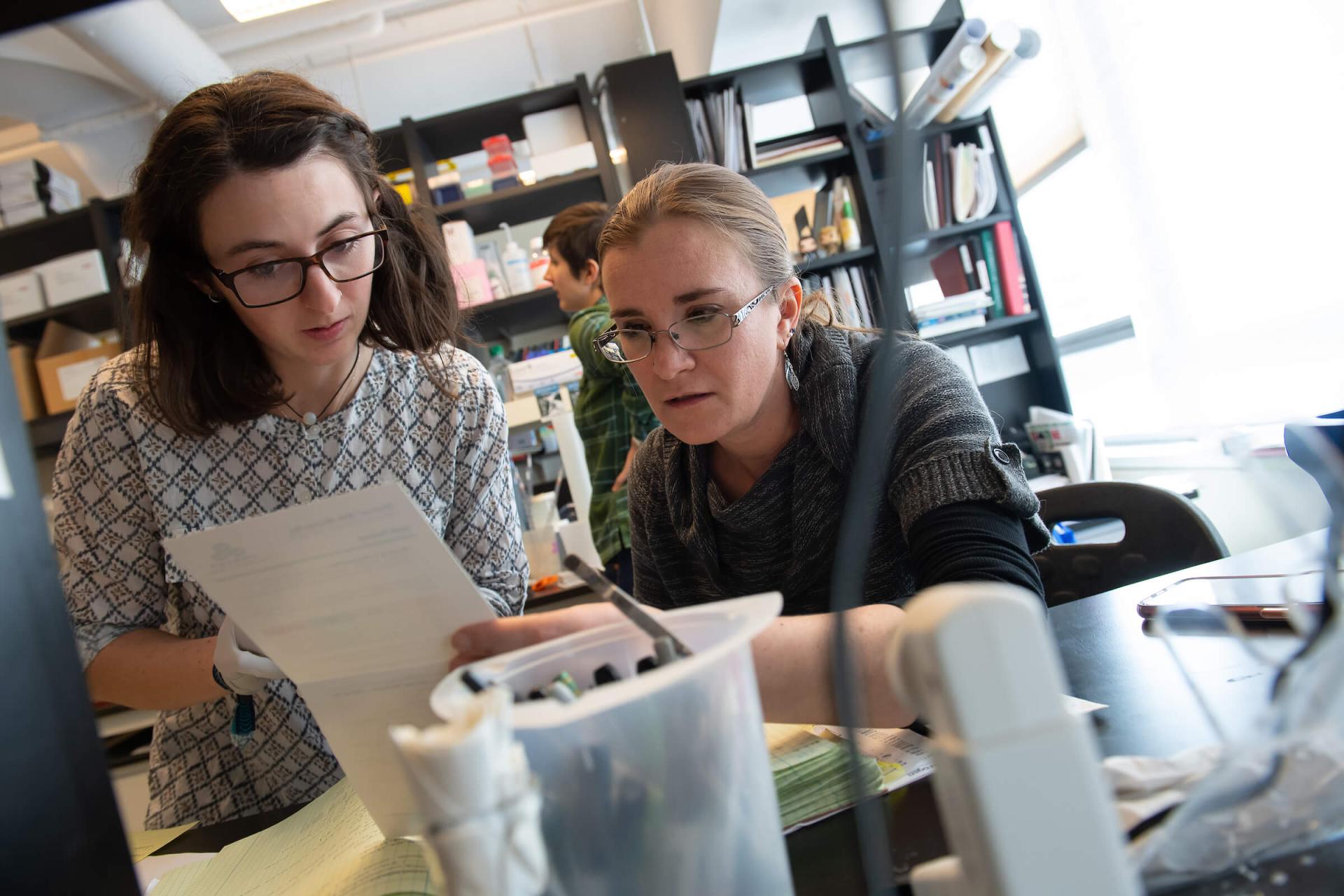Promising Pediatric Oncology Trial
Few oncology subspecialities practice at the cutting edge of science like pediatric oncology, a field that leverages clinical trials to such an effect that cancer’s most vulnerable patients receive groundbreaking treatments.
From 2019 to 2024, the UVM Cancer Center and UVM Children’s Hospital hosted one such trial to investigate whether chemotherapy paired with an immunotherapy treatment could improve outcomes for children diagnosed with standard-risk B-cell acute lymphoblastic leukemia (ALL).
“As pediatric oncologists, we’re always striving to increase cure rates,” says Jessica Heath, M.D., a pediatric oncologist-hematologist and the Cancer Center’s associate director for clinical and translational research, who oversaw the trial conducted at UVM. “If we can do that without significantly increasing toxicity, then that’s a big win for this population.”
Re-Engaging the Immune System
The most common childhood cancer, ALL affects about 4,000 children in the U.S. per year, with 5 to 10 cases diagnosed each year within the UVM Cancer Center’s Vermont and northern New York catchment area. In the 1950s, ALL was considered a death sentence, and although new treatments have improved the overall cure rate, the battle is far from over. High levels of chemotoxicity incurred during standard treatment, as well as the threat of relapses, for patients with ALL have compelled researchers to find new modes of treating this devastating disease.
Enter the monoclonal antibody blinatumomab, a treatment that directs the immune system’s attention toward evasive cancer cells. A linker molecule, blinatumomab attaches one of its arms to a T cell and the other to a leukemia cell and pulls them closer together. Triggered by its proximity to the invader, the T cell launches an attack on the lymphoblast and fulfills its role as the immune system’s frontline fighter.
Like most novel therapies, blinatumomab was first introduced to pediatric cancer patients whose treatment options were limited—in this case, children with relapsed B-cell ALL. The impressive results of those early clinical trials motivated a new question: Could adding blinatumomab to standard chemotherapy improve outcomes in standard-risk B-cell ALL patients?
Receiving Treatment at Home
UVM’s Cancer Center and Children’s Hospital were among 214 sites hosting the clinical trial, which was developed by the Children’s Oncology Group—a member of the NCI National Clinical Trials Network (NCTN) and the world’s largest organization devoted exclusively to childhood and adolescent cancer research. The trial enrolled 4406 patients newly diagnosed with standard-risk B-cell ALL. Over the course of 2.5 years, these patients received either the standard treatment (chemotherapy alone) or chemotherapy plus two nonsequential, 28-day cycles of blinatumomab, administered through a 24-hour drip of the immunotherapy via a backpack to an intravenous port.
Administering this round-the-clock treatment at home could mean less travel time and fewer hours in clinic—a significant convenience for the UVM Cancer Center’s rural patients and their families. “Even kids who live on a farm in the middle of northern New York or the Northeast Kingdom can have access to this drug,” says Dr. Heath “This was all possible because of the physicians, nurses, social workers, and pharmacists who worked together to provide medication to these kids.”
The results of the five-year blinatumomab trial are breathtaking. Investigators found an improved three-year disease-free survival rate, from 87.9 percent to 96 percent, and a decreased risk of relapse, from 11.8 percent to 3.3 percent. For Dr. Heath and her team, it’s a giant leap forward for pediatric oncology. “To see a drug integrated into the chemotherapy backbone without adding a lot of toxicity—and while improving cure rates for almost every child with B-ALL—is super exciting,” she says.
About The Children’s Oncology Group (COG) — COG (childrensoncologygroup.org), a member of the NCI National Clinical Trials Network (NCTN), is the world’s largest organization devoted exclusively to childhood and adolescent cancer research. COG unites over 10,000 experts in childhood cancer at more than 200 leading children’s hospitals, universities, and cancer centers across North America, Australia, New Zealand, and Saudi Arabia in the fight against childhood cancer. Today, more than 80% of the 15,000 children and adolescents diagnosed with cancer each year in the United States are cared for at COG member institutions. Research performed by COG institutions over the past 50 years has transformed childhood cancer from a virtually incurable disease to one with a combined 5-year survival rate of 86%. COG’s mission is to improve the cure rate and outcomes for all children with cancer.
